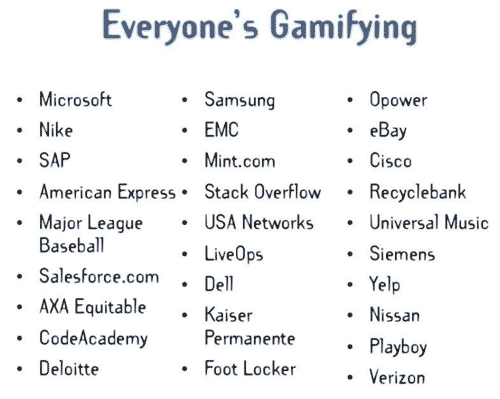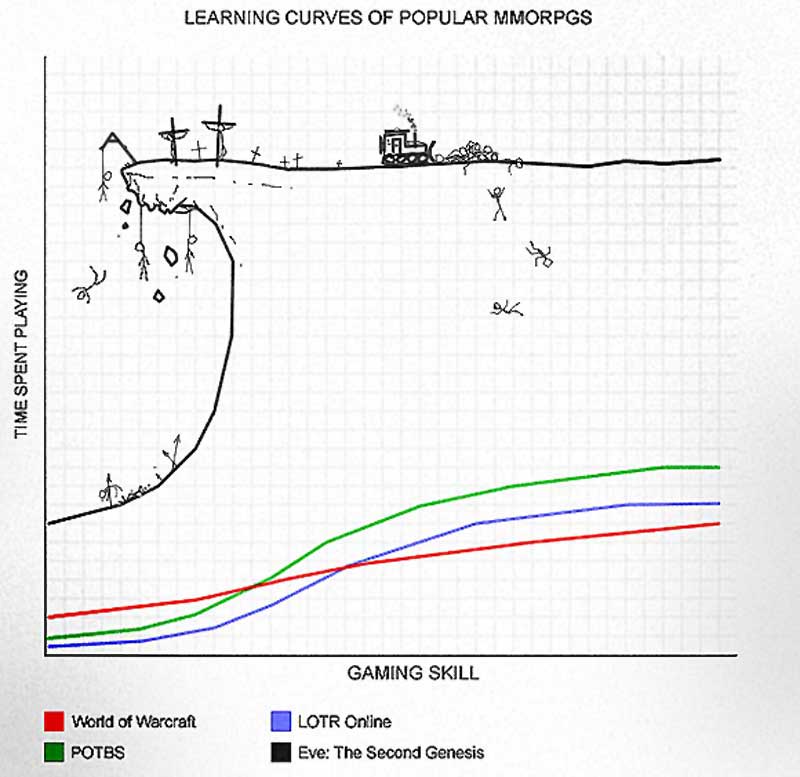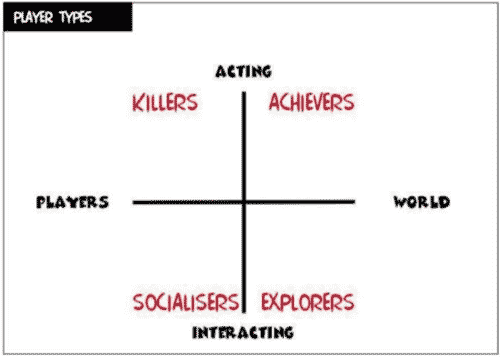Gamification - the game as a motivation in business

First, the main news - Coursera will soon be available with subtitles in Russian , and the first course is just gaming Kevin Verbakh.
Now about the topic itself. Last week I was a special guest at a gamification event, and I’ll talk about it below with examples from board games that are close to me.
')
In general, gamification or gamification is when game mechanics are superimposed on something in real life. In the USSR, for example, there were competition shifts, a board with the best workers, and so on — all these are good good games, when work goes not for the sake of a plan, but in order to prove one's coolness or just participate in the process. More examples:
- Habr . Karma, rating plus our badges and invites: they create additional motivation to write posts.
- The terrorists . The lecture itself also said that the militants in Al Qaeda go through several levels of a kind of game, each of which unlocks new opportunities in the organization.
- Training There was also an example of a school in which everyone in elementary school began to play roles in the crew of a spacecraft. It became interesting to study not because it is necessary, but because it helped to pass the plot.
About the main thing
The most important thing in gamification is creating a fan. It is important to play was interesting. In this case, no one knows a clear model of success, you need to test everything, everything, everything. Kevin talked about Rovio - they hit the birds from the 52nd attempt, and still cannot repeat the success, although they made several more approaches to the projectile.
During the development of gamification as a scientific field, it was possible to identify the main qualities of a good model: this is the player's path, motivation, balance, social interaction, riddles, surprises, feedback and tests.
Player growth curve
The first is the thoughtful path of the player, leading him from his acquaintance with the game to skill. Then I can not help but show this picture:

Kevin said he applied this to his course. The usual educational process is the levels of units of the same complexity and "bosses" in the form of exams or tests. He made a gradual increase in complexity - first simply, then more difficult, then quite difficult, then rest, then a strong boss, and in the final a little easier. He says it helps to take a course at least 2 times more students.
The most interesting growth curve, perhaps, in chess. 5 minutes to explain the rules - and dozens of years to improve.
Sophisticated work with player motivations
There are 4 main "profiles":

Killers are strongly zamočennye munchkins, those who sit in the first lines of records. They are the most stubborn game geeks. Achiver is those who like to explore everything around, but do it partly for the sake of medals. Researchers just like to walk, watch and touch, the perfect type for a quest. Socializers are those who like to communicate.
Transferring to our board games, killers are those who like to win at any cost. Achivera love to win more beautifully, plus try to bring all sorts of studies like a tree of sciences to the end. Researchers appreciate the setting and art. Socializers are ideal board game players at a party where the mood level depends on the personalities of the other players. The game itself as a mechanic is not very important for them.
Literate balance
Here, in general, everything is clear. If magicians are better than warriors, then no one will play for warriors. Or if there is a trunk that can be shot at a boss, then everyone will use only it - accordingly, the game will suffer. Good balance is part of every mechanic.
Our balance in the Nastolka also means that the game should forgive the player’s mistake at the beginning of the game and a couple of minor mistakes in the middle.
Social interaction
The better the players communicate with each other, the better the game, as a rule. In order for players to communicate with each other, they need to give them tools inside the game. For example, forcing together to throw one big boss.
A more complex example: imagine some non-existent board game about the race of space ships. Mechanics of the first level - just building your ship and comparing points at the end of the game. The second level adds little interaction along the way - for example, you need to build from a common pool of resources, which means competing for them. The third level is also interaction during the race, for example, tossing “surprises”, mutual help and so on.
Riddles
Players like little puzzles to attract attention. For example, Kevin said that he had a different background in his lectures each time, and if you compare all these backgrounds, you can make a secret message. Part of the students felt thanks to this motivation to watch to the end.
In board games with a assembled deck, players often go into deep analytics to collect something a couple percent more efficiently than before.
Surprise
What is more interesting - to get 100 rubles with a guarantee of 100% or 10 thousand rubles with a probability of 1%? As it turned out, most people like the second option a lot more. As a consequence, which can be observed - a shaft of contests for the repost of Vkontakte, where hundreds of people send spam to friends in the tape, trying to win a prize.
We have the game "Jackal", where you need to explore the island, turning over the squares that make up the map. Adults in this game like the strategic depth, but the children just burn their eyes with delight every time another chip turns over - can, finally, here the old pirate hid his gold? Arrrr, yes!
Feedback
This is the thing that shows that the player is doing everything right. The simplest example is that in one social network people did not fill out a profile to the end. For a couple of hours they screwed up the progress bar for filling the profile - and an additional 20% of the participants filled out the profiles, because they wanted to finish the indicator up to 100%.
Tests
Here, too, everything is clear. Hundreds of tests with real people, and at the same time - not your friends, but different future participants.
Further, Kevin begins to give examples of cases. If it is interesting, one must understand each one, and for this it is better to take a course on the Curser, especially since he is now Russian.
Then he made a heroic attempt to sell his book, and then they began to ask him questions like “Is it possible to gamify life”. Perhaps the most interesting question is about the negative factors of gamification. This, for example, when the type of driving process is combined with the game, and in pursuit of an achivka the driver knocks down a pedestrian. The answer is no, not all processes are suitable for transfer to the game.
And the second point - the key strength of the game is that the rewards will be interesting. For example, 4sq is a social network where many people check in for badges. At some point they had a decline in the checkiners for medals. The fact is that there were too many awards, and it is already tiresome to hunt them. People look at them, understand how much effort they have spent - and also understand that these badges absolutely do not mean anything in reality. The reward ceases to be a stimulus, and the motivation ends. Accordingly, it is very important to track the moment when the stimulus is declining - and immediately come up with something else in the game.
Links
- Transcript of Kevin Verbach's lecture
- Gamification (gamification) on the wiki
- Presentation for the lecture
- Kevin Course on Curser
PS Returning to Curser, thanks to Digital October and their joint agreement on translation, all courses will now gradually acquire Russian subtitles.
Source: https://habr.com/ru/post/176801/
All Articles